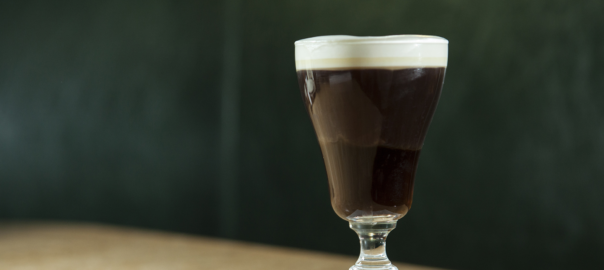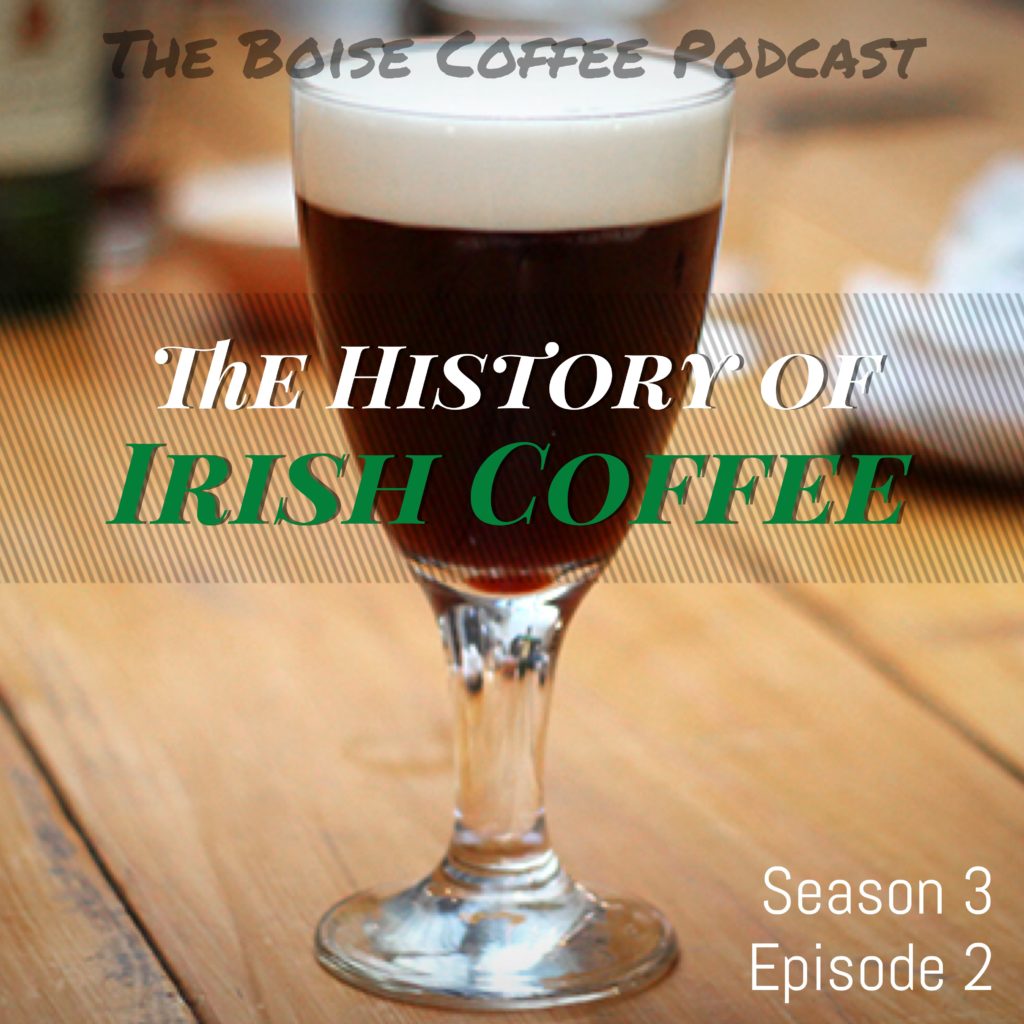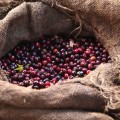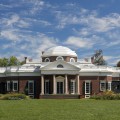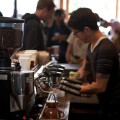In honor of St. Patrick’s Day, this week’s episode is all about the history of Irish Coffee. Starting in a flying boat terminal in Ireland, then making its way to San Francisco, the story of how Irish Coffee made it into mainstream culture is well worth hearing.
This episode of The Boise Coffee Podcast is brought to you by My Espresso Shop. Use offer code “BOISECOFFEE” to get 10% off your order including any espresso machine or grinder. Visit MyEspressoShop.com today!
You can read the full episode transcript below.
This episode of The Boise Coffee Podcast is brought to you by My Espresso Shop. My Espresso Shop is a leading online retailer of espresso machines, grinders, and related accessories, and with their price match guarantee you know you’re getting the absolute lowest prices on the market. Visit MyEspressoShop.com to find out more.
It’s the 1930s in Ireland. A man by the name of Joe Sheridan decides to apply for a chef’s job at an airport in the city of Rineanna. It’s a small airport – a flying boat terminal, in fact, but it’s significant. The airport is called Foynes, and it becomes the first airport to host transatlantic flights between Ireland and New York City. Joe Sheridan soon becomes well known as a great chef in a new international hub.
In 1943 a flight departs Foynes headed for New York with dozens of passengers on board, when suddenly a bad storm hits. The pilot is forced to turn the plane around and land back in Foynes, and, as you can probably imagine, the passengers are rather scared.
Legend says that after the flight landed and the cold, shaken passengers got back into the terminal, chef and bartender Joe Sheridan decided to whip up something special. He brewed dark coffee, tossed in some sugar cubes, then added a splash of Tullamore DEW whisky. Finally, he topped the drink with a layer of cold, thick cream.
As he passed the drink out, one of the passengers took a sip, then asked, “is this Brazilian coffee?” “No,” Sheridan said, “It’s Irish Coffee.”
I’m Colin Mansfield and welcome to The Boise Coffee Podcast.
In honor of Saint Patrick’s Day, this week we’re going to talk about Irish Coffee.
There’s these great videos online that I stumbled onto while preparing for this episode. You can find dozens of them by simply typing “Buena Vista Cafe” into YouTube. All of them are similar, and all of them are amazing. A bartender stands behind a row of over a dozen identical glasses – he’s wearing a white shirt, and sometimes a white jacket on top. He wears a tie, and overall has a very professional appearance. About the glasses – they’re not the type of glasses you’d usually drink alcohol out of – they have a short stem, a curved body, and a wide rim at the top. The bartender handles these glasses as if he’s touched hundreds of them before – because he has. First comes the hot water. This isn’t a part of the finished drink, it’s only meant to heat the glass up in preparation. But the bartender doesn’t pick each glass up individually to fill it with hot water – instead he takes his carafe and pours it while gliding his hand over all of the glasses, filling them nearly simultaneously. In one fell motion – whoosh – the glasses are hot. Now, down the line his hands move, dumping the contents of each heated glass into some trough hidden behind the bar.
Next comes the sugar cubes. Quickly, he snatches simple white sugar cubes from a box and – plink, plink – drops two into each glass as his hands move down the line. And now – the coffee. In the same manner he dumped the water, the bartender pulls out a large carafe of piping hot brewed coffee and begins pouring it while moving down the line of glasses, never hesitating or stopping over an individual cup. His pouring arm makes another pass over the glasses, ensuring each is filled to the same level. It’s almost like he sees the group of beverages as a whole rather than dozens of individual drinks.
Next is the stirring – he wants the sugar to be completely dissolved in the hot coffee. Taking a long-stemmed spoon, he stirs each cup, but not with methodical care or any hint of delicateness. No, he stirs rapidly, with fervor, dunking the spoon into a glass, stirring quickly, then onto the next one. The spoon makes this low chunk chunk chunk sound as it slaps against the sides and bottom of each glass.
And now, the whisky – a bottle with pouring spout attached, but no shot glasses used. Instead, the bar tender once again pours down the line of glasses, knowing exactly how much is needed for each drink. The drinks remain perfectly level in relation to one another – they’re identical, like a line of cars rolling off an assembly line one after another. The bartender pours the whisky while holding his army perhaps a foot or two above the glasses. This creates a dramatic moving waterfall of alcohol cascading into the glasses below.
And now, the bartender pauses. He takes a towel, wipes his hands, perhaps he talks to an employee walking nearby. Then, reaching below the bar, he withdraws a metal pot similar to something you might find at a coffee shop used to steam milk – but this is cream, and it’s perfectly chilled. The bartender takes a spoon, lowers it onto the surface of the first drink, then pours the cream on top, letting it settle as a layer on top of the warm coffee/whisky mixture. Then, not losing a moment, he moves onto the next drink. Each pour takes perhaps 1 second, and in less than 15 the entire row of drinks is completed.
And now, the Irish Coffee making process complete, the bartender palms two drinks in each hand, removes them from the assembly line, and carries them off to a customer.
This is the process used to make Irish Coffees at the Buena Vista Cafe in San Francisco, California. The Buena Vista didn’t invent the Irish Coffee – that honor belongs to Joe Sheridan at the Foynes flying boat terminal like we heard at the beginning of the episode – but without this American bar, Irish Coffee would likely have never become the standard it is today.
It’s not uncommon for restaurants and bars around the world to develop their own special drinks or dishes. We all know about specials featured at our favorite local spots around town. Few of those specials, though, have been passed along to the corners of the world in the same way Irish Coffee has.
Irish Coffee is ubiquitous now in the same way that mulled wine or a hot toddy is, and it can be tempting to assume that well-known mixed drinks like these spread in the same way as a viral video online. Somebody, somewhere tastes the drink, enjoys it, then tells their friends. Those friends, in turn, try the drink, enjoy it, then tell their friends. Rinse and repeat.
This might be true for some drinks, but Irish Coffee owes its spread to one man. And while Joe Sheridan invented the drink, he wasn’t the person that transformed Irish Coffee into the fixed icon that it is today. That honor belongs to a reporter named Stanton Delaplane.
Delaplane was a reporter – but not exactly your run-of-the-mill variety. He worked for the San Francisco Chronicle for 53 years. In 1941 he won the Pulitzer Prize for articles about “the Free State of Jefferson,” a group of four Northern California counties and one Oregon county that threatened to break away and form a 49th state in a dispute over highway construction in the gold and copper mining areas. He also won National Headliner Awards in 1946 and 1959. Delaplane wrote a column five days a week for years and years, and in 1944 and 1945 he served as a war correspondent in the Pacific Ocean theater of World War II.
According to a SFGate article written about Delaplane in 2008, he was a perfectionist who enjoyed writing on whatever he had laying around – like old air mail letters – then going through every line carefully, ensuring he wrote exactly what he wanted to say.
Starting in 1953 Delaplane began writing a syndicated humorous travel column called “Postcards.” He used short sentences in a staccato style, which he said was for the benefit of San Francisco Municipal Railway riders who had to read the paper while commuting on the shaky train.
British commentator Alistair Cooke once wrote about Delaplane’s writing style saying, “Stanton Delaplane wrote like a young and happy and wholly successful pupil of Hemingway. he rarely wrote sentences of more than six or seven words and could go weeks without calling on an adjective. His peculiar magic, which I often probed into and never discovered, was to keep these bare sentences rollicking along in the most effortless way, running as clean as spring water over the bed of a brook. He could not help being an entertaining writer and that is a gift that very few writers indeed can legitimately claim from the double-domed philosophers to the light-weight journalists.”
Stanton Delaplane was a tremendous writer, but he was also the man that brought Irish Coffee to the United States – and through that, into mainstream culture. How he accomplished that, after the break.
This episode of The Boise Coffee Podcast is brought to you by My Espresso Shop, a leading online retailer of espresso machines, grinders, and all the accessories that go with them. The folks at My Espresso Shop are extremely customer-focused – they want you to have the best buying experience possible, and they do a great job. Not only do they have a price-match guarantee to make sure you’re getting the lowest possible price for your coffee equipment, but they almost always have an additional special bonus offer going on. Right now, for example, if you look at their site, you’ll see they’re offering a free Amazon gift card with purchase of almost any Espresso Machine and grinder.
To make things even better, for listeners of my podcast, My Espresso Shop is offering 10% off your order containing a grinder or espresso machine. Just use offer code “BOISECOFFEE” at checkout. This is hands-down the best deal you’re going to find online for name-brand high quality espresso equipment. Head over to MyEspressoShop.com, use offer code BOISECOFFEE, and enjoy!
In the early 1950s Stanton Delaplane visited Ireland. By that time the old Foynes flying boat terminal had closed and been replaced by Shannon International Airport. Joe Sheridan – the chef who invented Irish Coffee on that cold, stormy night nearly 20 years prior, had moved to the new airport as well, and he had made Irish Coffee a regular part of his menu.
Delaplane ordered an Irish Coffee, and immediately fell in love. After returning to the states, he took the recipe to his friends Jack Koeppler and George Freeberg, the owners of a San Francisco bar called the Buena Vista Cafe. Delaplane asked for Koeppler’s and Freeberg’s help to re-create the magical drink he had tasted in Ireland, and on November 10th, 1952 they got to work.
On its face, Irish Coffee has an incredibly simple recipe: coffee, whisky, sugar, and cream. But as with any recipe, the ratios of ingredients and the timing of when to add them can turn making a simple drink into a time-consuming affair – especially if you’re a perfectionist like Stanton Delaplane. That night with Jack Koeppler became a study in trial-and-error; the two of them would mix drinks, sip judiciously, and then record the faults. Over time, they acknowledged two recurring problems:
The first problem was that the taste just wasn’t quite right based on Delaplane’s experience at the Shannon Airport in Ireland.
The second problem was that strangely, they couldn’t get the cream to float on top of the beverage. Each time they poured it in, it sank to the bottom.
That night of testing resulted in dozens of failed experiments, and a lot of whisky consumed over several hours. After drinking several Irish Coffees in a row, Stanton Delaplane nearly passed out on the cable car tracks outside the Buena Vista Cafe.
Stanton was heartbroken at their failed evening of experimentation, but Jack remained undaunted. He doubled down, deciding to pilgrimage to Ireland himself and learn the secret of the elusive Irish Coffee. After his return, they were able to solve both problems they had experienced on that hangover-inducing coffee binge.
To solve the problem of taste Stanton and Jack used the same whisky as Joe Sheridan: Tullamore DEW. The problem with the cream, however, was less-easily solved. They brought their sinking cream problem to the mayor of San Francisco, George Christopher, who also happened to be a prominent dairy owner. It was here they discovered that if the cream was allowed to age for 48 hours, then frothed to a precise consistency it would float neatly on top of their drink just as it had in Ireland.
With the drink perfected, the only thing left was to advertise – a task perfectly suited for Stanton Delaplane. He began mentioning the drink in his travel column, which was widely read throughout the U.S. Irish Coffee and the Buena Vista Cafe quickly grew in popularity, attracting both local Californians and tourists from all across the United States. Everyone wanted a taste of Irish Coffee. Once Irish Coffee became popular, consumption of whisky at the Buena Vista went from 2 cases a year to about 1,000 cases which equated to almost 10 percent of the United States’ whisky consumption at that time. It’s said that the Buena Vista bartenders made 2,000 Irish Coffees daily, for many years. Meeting that amount of demand required that they become both fast and accurate at making their drink. This is how the assembly line method of making Irish Coffee came into being – the method that I described at the beginning of the show.
According to one article, the busiest day the Buena Vista has ever seen was the Super Bowl in 1982, 49ers vs. Miami. Three bartenders served 109 bottles of whiskey between 8am and 5pm, and the night crew served another 104. With approximately 29 drinks per bottle, that means the cafe served over 6,000 drinks that day.
By the Buena Vista’s own count, they have served more than 30 million Irish Coffees total.
In 1952 the Buena Vista Cafe took on a new employee. It was an Irish fella – a guy by the name of Joe Sheridan, the inventor of Irish Coffee. Sheridan was asked to come and work at the bar, which he did for ten years. It’s not often that an inventor gets to watch his creation become famous, but Joe Sheridan got that honor. Today, he’s buried in Oakland, CA.
About Irish Coffee, legend says that Joe Sheridan offered this advice on what ingredients to use in his famous beverage: “Cream as rich as an Irish brogue; coffee as strong as a friendly hand; sugar sweet as the tongue of a rogue; and whisky smooth as the wit of the land.”
Thanks for listening to The Boise Coffee Podcast. I’m your host, Colin Mansfield, and you just heard episode 2 of season 3 of my podcast on coffee. If you like what you heard today and want to hear more, you can find previous seasons and episodes on iTunes, Stitcher, or my blog – BoiseCoffee.org. If you want to get in touch with me you can drop me a line at BoiseCoffee@gmail.com, or reach out to me on twitter. My handle is @BoiseCoffee. Today’s episode of The Boise Coffee Podcast was brought to you by My Espresso Shop. You can go online now and save 10% on any grinder or espresso machine by using offer code “BoiseCoffee.” Visit MyEspressoShop.com and get shopping!
Thank you so much for listening, and have a great first week of spring!
Podcast: Play in new window | Download
Subscribe: Apple Podcasts | Android | Stitcher | RSS
